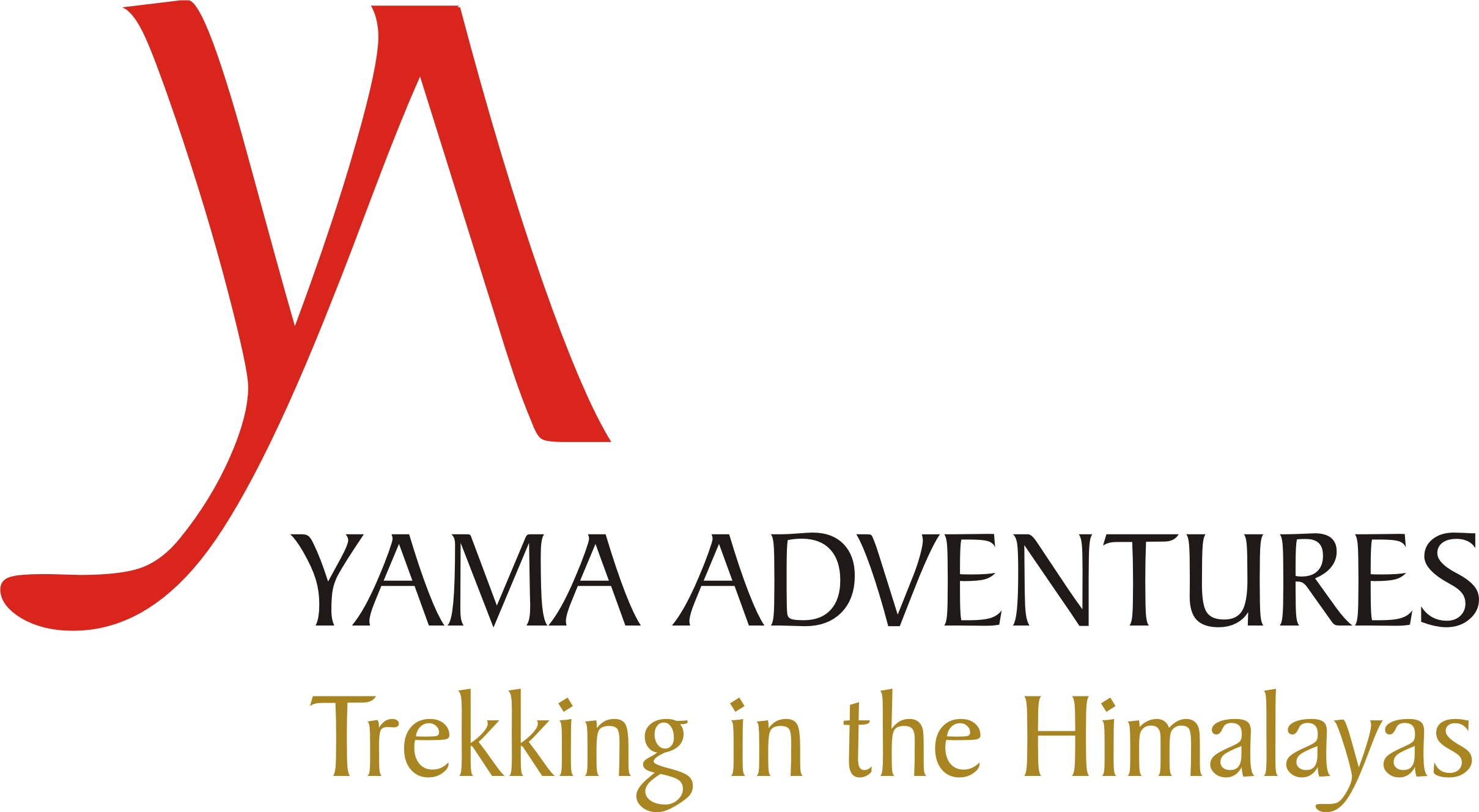BUDDHIST PILGRIMAGE TOUR TWO
This journey will include some of the major sites where Buddhism flourished in India as we travel though remote areas and bustling bazaars. Vividly painted mud-walled homes stand in stark contrast to vast deserts and chaotic cities. Bejeweled camels and sacred cows amble crookedly alongside cycle-rickshaws and elaborately clad sadhus on spiritual pilgrimage. This trip offers a rare opportunity to explore a treasure trove of cultural, historical, and spiritual riches – and indeed to see places, through their importance in the life of the Buddha, that shaped the history of the region and the world.
DAY BY DAY ITINERARY
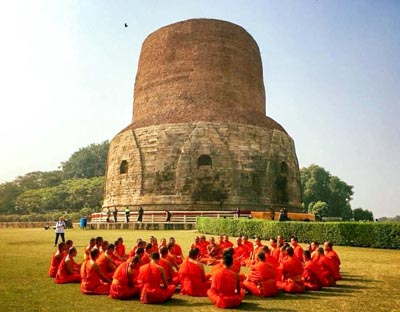
DAY 1: ARRIVE IN DELHI.
You will be met upon your arrival and transferred to the hotel. There is an option of sightseeing around Delhi. In the morning, you can visit the Gandhi memorial at Raj Ghat followed by India Gate and the President house. A visit to the Humayun’s tomb, Lotus Temple (closed on Monday) and Qutub Minar can be done in the afternoon. (B)
DAY 2: DELHI –VARANASI
Later in the evening, you will be dropped to the railway station to board the Shivganga Express train 18:25hrs for Varanasi. (B)
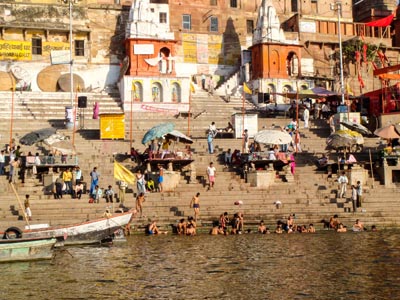
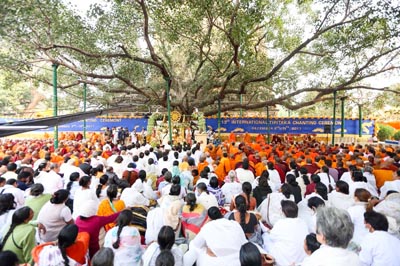
Day 3: VARANASI-SARNATH (12 km one way)
You will be transferred to the hotel upon your arrival in Varanasi in the morning. On this day, you will visit Sarnath, which is 12kms from Varanasi. It is here where Lord Buddha preached his doctrine of truth to the world. The remains of monasteries dating from the 3rd century B.C. to the 1st century A.D. indicate a thriving monastic community. (B,L,D)
Day 4: VARANASI – BODHGAYA, 8 Hours, 245km
Leaving Rajgir, we make our way to Bodh Gaya, the site of the Buddha’s enlightenment. The focal point of Bodh Gaya and one of the most revered sites in Buddhism is the Mahabodhi Mahavihara, built on the site where Buddha gained enlightenment more than 2,500 years ago, now honored as a UNESCO World Heritage site. It is here where Siddhartha Gautama sat under a Bodhi tree and meditated, determined not to get up until he gained enlightenment. Still standing is a Bodhi tree said to be a descendent from the original tree. From October through March tens of thousands of pilgrims visit the site. En route to Bodh Gaya we visit Nalanda. Founded in the 5th century AD, Nalanda was one of the world’s great universities and most important Buddhist centers. During its peak in the 7th century AD, Nalanda was home to over 10,000 monks and scholars. Visit the Great Stupa built on Shariputra’s relics, extensive monastic remains, and the Archaeological Museum housing finds from Nalanda and Rajgir. Royal Residency, Bodh Gaya (B,L,D)
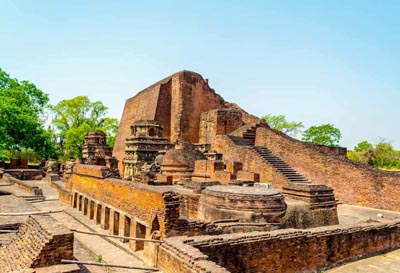
Day 5: BODHGAYA-RAJGIRI-NALANDA-PATNA, 7 hours, 205km
On this day, we will be travelling quite early to Patna with stops at Rajgiri and Nalanda along the way, the two places which have historically played a significant rolein the spread of Buddhism. Rajgiri is associated with the Buddha’s first two disciples, Sariputra and Maudgalyana who were well-known for their intelligence and spiritual power. Nalanda is synonymous with the great Nalanda University which developed as the sole monastic institution. The ruins of Nalanda University are evident of the massive structure of this historical institution. (B,L,D)
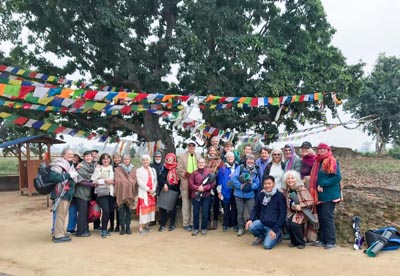
Day 6: PATNA-VAISHALI-KUSHINAGAR, 8 hours, 285km
Vaishali falls on the way to Kushinagar and is situated on the left bank of the Gandak River. It is said that Lord Buddha frequently visited this place and preached his last sermon at Kolhua, close to Vaishali. To commemorate this event, the great Emperor Asoka erected one of his Lion Pillars here in the 3rd century B.C. After the Mahaparinirvana of the Buddha, Vaishali hosted the second Buddhist Council one hundred years later. Two more stupas were erected later to venerate this great event. Kushinagar is a sacred site for Buddhists all over the world as it is the place where Buddha attained Mahaparinirvana. (B,L,D)
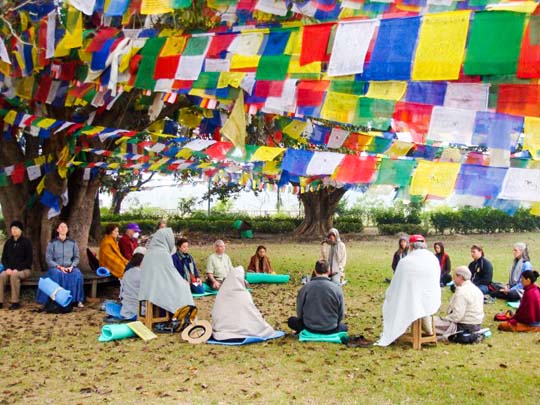
Day 7: KUSHINAGAR- LUMBINI, 4hours, 165km
In the morning, we will visit Nirvana temple and stupa, Mathakuar shrine and Ramabhar stupa before leaving for Lumbini. Located near the Nepal-India border, Lumbini is one of the most significant places for Buddhist pilgrimage as it is the birth place of Prince Siddhartha, the then to be Buddha. You will be transported to the hotel upon your arrival in Lumbini. (B,L,D)
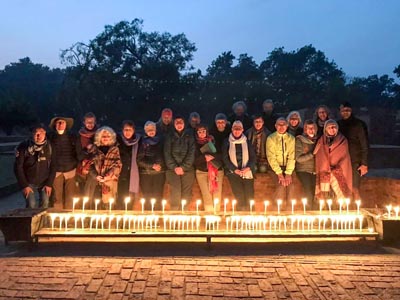
Day 8: LUMBINI-SRAVASTI, 6 hours, 205km
After breakfast, we will visit the Lumbini garden, the Asoka Pillar, Pushkarni- The sacred pool, Sanctum Sanctorum of Lord Buddha’s birthplace and the temple. It is said that the great Emperor Asoka visited the site two centuries after the Buddha’s mahaparinirvana and constructed a Stupa (mound, usually of earth) and a Pillar in his honor. Although largely in ruins now, these remains mark the Buddha’s birthplace. After these visits to the holy sites, we will drive to Sravasti, where Buddha is believed to have spent 24 monsoon seasons. Sravasti was the capital of the kingdom of Kosala and was a prosperous trading centre and centre for religious associations in the 6th century B.C. Overnight stay in hotel. (B,L,D)
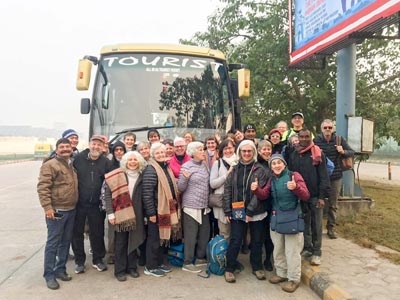
Day 9: SRAVASTI-LUCKNOW, 5 hours, 180km
Post breakfast, you will visit the Shobhanath Temple, Maheth and Saheth before leaving for Lucknow in the afternoon. Overnight stay in hotel. (B,L,D)
Day 10: LUCKNOW-DELHI, 7 hours
Today you have a guided tour covering the Great Imambara, the residency Alambagh ruins, Dilkusha palace and Secundrebagh. In the evening, you will board the 1535hrs Shatabdi Express train to Delhi. Upon arrival, check in at the hotel in Delhi. (B,L,D)
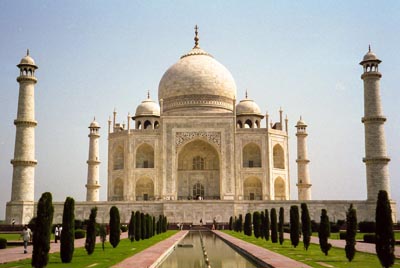
Day 11: DELHI-AGRA-DELHI, 4 hours (one way), 220km
Agra, the erstwhile capital of India under the great Mughals, is famous for the Taj Mahal. Most of Agra is on the west bank of the River Yamuna with the Agra fort and the Taj Mahal at its nucleus. Upon arrival in Agra, you will be taken for a half-day sightseeing tour of the city, covering the incredible architectural excellence of Taj Mahal, built by Emperor Shah Jahan in the loving memory of his beloved wife Mumtaz Mahal. The Agra Fort was built principally as a military establishment by Akbar in 1565 and is 2.5 km long. The red sandstone of Agra fort was partially converted into a palace during Shah Jahan’s time. In the evening you will drive back to Delhi and stay in hotel. (B,L,D)
Day 12: FLY BACK HOME
You will be transferred to the airport for your flight back home. (B)
LAND COST: Available on request.
Included in Land Cost:
- Accommodations as noted in the itinerary
- Meals as noted in the itinerary (B=breakfast, L=lunch, D=dinner)
- All transportation
- Sightseeing as noted with experienced English-speaking local guides
- All entry fees at all temples and monuments
Not Included in Land Cost:
- Medical and evacuation insurance
- Trip cancellation, travel delay or baggage loss insurance
- International airfare
- Miscellaneous expenses and tipping to the staff
- Visa fees, excess baggage fees
- Video, still camera, and movie camera fees
- Items of a personal nature such as alcoholic beverages, laundry, etc.
- Any extra charges incurred as a result of delays or natural calamities beyond Yama Adventures control
